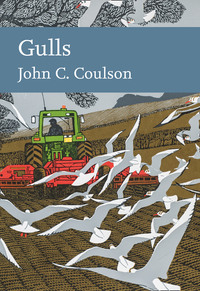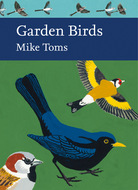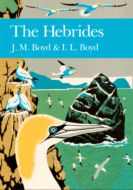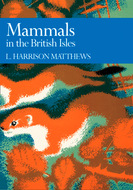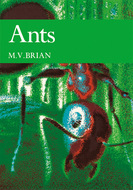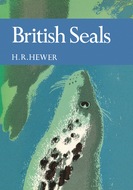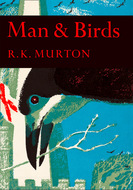Kitabı oku: «Gulls», sayfa 2
I owe a great deal to the BTO, not only for the ringing scheme they manage so efficiently, but also for the extensive data they have collected. When I first had contact with the BTO in the early 1950s, it had a small office at the top of a set of outside stairs in a side street in Oxford, with a single salaried member of staff, Dr Bruce Campbell. Here, I acknowledge the trust’s willingness to allow me to reproduce maps of ringing recoveries of gulls and to use the most recently available maps of the breeding season distribution of gulls in Britain and Ireland in 2007–11.
Many people have offered photographs for inclusion in the book, and these have all been credited in the captions. In particular, I thank Nicholas Aebischer, Pep Arcos, Rob Barrett, Colin Carter, Becky Coulson, Anthony Davison, Alan Dean, Andrew Easton, Phil Jones, John Kemp, Mark Leitch, Fred van Olphen, Daniel Oro, Mike Osborne, Viola Ross-Smith, Steven Seal, Charles Sharp, Michael Southcott, Brett Spencer, Norman Deans van Swelm, Thermos (fi.wikipedia), Dan Turner and an anonymous photographer for their photographic help and willing permission to allow their excellent images to be included in this book.
The extensive data set on British seabirds now archived and maintained by the Joint Nature Conservancy Council and readily accessible online is a valuable asset and source of information. My thanks also go to Natural England for granting a freedom of information request concerning culls and licences issued to collect gull eggs.
Help and information have been supplied by many, in particular Nicholas Aebischer, David Baines, Robert Barrett, Peter Bell, Richard Bevan, Tim Birkhead, Bill Bourne, Joanna Burger, David Cabot, Kees Camphuysen, Colin Carter, Keith Clarkson, Ian Court, J. B. Cragg, Francis Daunt, Ian Deans, Greg Douglas, Andy Douse, Steve Dudley, Tim Dunn, George Dunnet, Andrew Easton, Julie Ellis, Mike Erwin, Sheila Frazer, Bob Furness, Michael Gochfeld, Thalassa Hamilton, Gill Hartley, Scott Hatch, Martin Heubeck, Grace Hickling, Keith Houston, Jon Jonsson, Heather Kyle, Susan Lindsay, Roddy Mavor, Jim Mills, Ian Nisbet, Daniel Oro, Ian Patterson, Ray Pierotti, Jean-Marc Pons, Julie Porter, Dick Potts, Richard Procter, Chris Redfern, Jim Reid, Sam Rider, Peter Rock, Robin Sellars, Peter Shield, Robert Swann, Mike Swindells, Martin Taylor, Mike Toms, Andrew Tongue, Mike Trees, Daniel Turner, Sarah Wanless, Matt Wood, Vero Wynne-Edwards, Bernard Zonfrillo and Jan Zorgdrager. Over the years, many others have helped in studies and investigations, and I appreciate the assistance of them all.
I owe a major debt of gratitude to my wife, Becky, for the many ways she has supported and helped my gull studies, solved many computing problems, and given help in preparing and checking the text of this book.
CHAPTER 1
An Overview of Gulls
GULLS ARE CONSPICUOUS WEB-FOOTED, long-winged, medium or large seabirds that are readily recognised by the public. Adults are mainly white with shades of grey or black on the mantle and wings. Most species have black wing-tips, some have white ‘mirrors’ within the black areas, but a few species – mainly those restricted to an Arctic breeding distribution – have entirely white wing-tips. In the breeding season, adults of different species either have entirely pure white or very dark (black or brown) heads, and all revert to white heads in the autumn and winter, often with small grey marks behind the eye or grey streaking on the neck.
Gulls are widely known to the public because of their size and the habit of many species to frequent harbours, follow ships, visit landfill sites and visit outdoor areas also frequented by humans, such as seaside resorts, sports fields, beaches, rivers, picnic areas and large car parks at shopping complexes. In recent years, they have become even more familiar in parts of Europe and North America because their numbers have increased and several species have taken to nesting on buildings in urban areas. This habit of urban breeding has developed independently several times in different countries during the twentieth century and has spread rapidly. Urban nesting is now occurring in several species, and has almost certainly arisen through the marked increases in the size of gull populations, coupled with the increased protection given to them over the last century. The presence of gulls in urban areas has been given considerable adverse publicity, including reported cases of adults protecting their unfledged young by diving close to people’s heads, or of gulls snatching food from unsuspecting members of the public. Such reports have resulted in gulls, and particularly the large species, acquiring pest status in certain areas.
EVOLUTION OF GULLS
The Charadriiformes constitutes a single large and distinctive lineage of modern birds, and includes waders, skuas, auks, terns, gulls and a few apparently aberrant species such as jacanas. Although the skuas appear to be similar to gulls, current evidence – including DNA studies – suggests that their ancestry may be nearer to the auks than to gulls.
The lightly built bones of birds associated with flight are fragile and therefore do not often produce good fossil remains. As a result, the evolution of present-day birds is poorly known, and much less so than that of reptiles, fish or mammals. Fossil remains attributable to gulls are particularly scarce. Many of those that have been found have not or cannot be attributed to the presently recognised genera, and certainly not to present-day species. More recently, several fossil bones initially attributed to gulls have been found to belong to other avian groups.
Fossil bones attributed to gulls and possibly members of the genus Larus have been reported both in Europe and the USA from deposits from the Middle Miocene, 20–15 million years ago. The relationship of these fossils to modern-day gulls is unclear; fossilised bird bones are often, and perhaps uncritically, given different specific names to those of currently existing species, ignoring the fact that the bones of a present-day species vary considerably in size according to sex and locality.
TAXONOMY OF GULLS
Initially, gull species were separated and identified on the basis of plumage, skeletal structure and size. In many species, specimens from different geographical areas held in museums and private collections were often named and given subspecies status based on minor differences in size and plumage, but all too frequently this relied on small numbers collected from only a few localities. Many of these named subspecies are still used today and, while the majority are probably justified, others that were described and named many years ago should be re-evaluated using modern techniques and larger samples. Some subspecies have already been rejected on this basis, and it is likely that others will not stand critical re-examination and will also be rejected.
In other cases, some existing subspecies have been promoted to the status of a full species, as has occurred recently within the Herring Gull complex in Europe and Asia. Still others may show only gradual changes in size, structure or plumage shades over their geographical range, a concept not recognised by early taxonomists until Julian Huxley applied the term clines to these groups in 1942. Such clines have already been demonstrated for the Black-legged Kittiwake (Rissa tridactyla), the Puffin (Fratercula arctica) and the Common Guillemot (Uria aalge) breeding in the North Atlantic. Questionable subspecies of gulls still exist, and some are discussed in more detail later in this chapter.
Initially, the eighteenth-century taxonomist Carl Linnaeus placed all gulls in the genus Larus, and most species remained there in what became a very large taxon. Eventually, the two species of kittiwake were removed from Larus and placed in the genus Rissa, while the Ivory Gull was moved to the genus Pagophila (P. eburnea), Sabine’s Gull was transferred to the genus Xema (X. sabini), and Ross’s Gull was placed in the genus Rhodostethia and then, more recently, to Hydrocoloeus (H. rosea), alongside the Little Gull (H. minutus). The Swallow-tailed Gull became the sole species in the genus Creagrus (C. furcatus). These separations were not unreservedly accepted, however, and as late as 1998, Philip Chu proposed returning all gulls to a single genus, Larus. Seven years later, the intensive study of the mitochondrial DNA of many gull species made by Jean-Marc Pons, Alexandre Hassanin and Pierre-Andre Crochet (2005) moved in the opposite direction and separated gulls into nine genera, and in so doing created the new genera Chroicocephalus (with 10 species worldwide), Hydrocoloeus (with two species) and Saundersilarus (comprising only Saunders’ Gull, S. saundersi, in China). Worldwide, at least 24 gull species, especially those with white heads in the breeding season, are still retained in the large genus Larus. Aside from Saundersilarus, three other genera are composed of only one species: Creagrus, containing the Galapagos Islands’ Swallow-tailed Gull; Xema, containing the High Arctic Sabine’s Gull; and Pagophila, including the Ivory Gull, also breeding in the High Arctic. Like Hydrocoloeus, the genus Rissa also contains two species.
One of the major findings made during the in-depth investigation by Pons et al. (2005) was that the gulls that had dark heads as adults did not form a single taxonomic group, as had been suggested by studies made in the second half of the twentieth century, but were composed of three distinct groups of species. These groups were called the ‘black-headed gulls’ and placed in the genus Ichthyaetus, while ‘hooded gulls’ were separated into another new genus, Leucophaeus. The third group, including the Black-headed Gull, were called ‘masked gulls’ and were placed in the genus Chroicocephalus. To an extent, this separation of gulls with dark heads in the breeding season is supported by similar courtship behaviour within each group, as originally suggested by Niko Tinbergen and his co-workers in the 1950s and supported by more extensive recent studies.
GULL SPECIES WORLDWIDE
Currently, there are about 50 species of gulls in the world. This total has increased in recent years and will probably be increased further as improved molecular techniques are used to revise their status; even the definition of a species may be modified or revised. The uncertainty about the precise number of species reflects the fact that the gulls as a group present a taxonomic nightmare, and this has resulted in years of confusion and disagreement. For example, the American Ornithologists’ Union (AOU) considers the Herring Gull breeding in North America to be a subspecies of the European Herring Gull (Larus argentatus smithsonianus), while the British Ornithologists’ Union (BOU) regards it as a separate species, Larus smithsonianus. There is still much confusion within the extensive Herring Gull and Lesser Black-backed Gull complex of species and subspecies, particularly those occurring in Asia (see box).
Speciation concepts
The decision as to whether and under what circumstances two populations of animals that occur in different geographical areas can be considered distinct species remains a taxonomic problem, because the level of genetic difference between the two that justifies specific status is often an arbitrary decision and one that is not always universally accepted.
One major taxonomic problem relates to the Herring Gull and Lesser Black-backed Gull complex of subspecies. In 1942, the evolutionary biologist Ernst Mayr suggested that the subspecies formed a chain around the northern hemisphere, starting with the Lesser Black-backed Gull in Europe, and then further subspecies occurring eastwards through Asia, each having progressively lighter-coloured wings and leading to the American Herring Gull in North America, and finally completing the ring with the Herring Gull of western Europe. The theory is that, by the time this chain of subspecies has spread eastwards around the northern hemisphere and the ends meet up again in Europe, the Lesser Black-backed Gull and the Herring Gull are obviously separate species and interbreed only very rarely. This beautiful explanation of a series of subspecies first spreading, then part of each becoming isolated, allowing the formation of further subspecies around the northern hemisphere and eventually producing two distinct species, was widely acclaimed and has been frequently quoted in books, scientific papers and lectures on genetics and speciation.
However, the recent development and application of mitochondrial DNA techniques has shown that the American Herring Gull is not the closest relative of the European Herring Gull as was previously thought, nor did it spread eastwards historically from North America to Europe to evolve into the European Herring Gull. That said, while the fascinating concept of a ring of gull subspecies spreading around the northern hemisphere and ending with two distinct species has been discredited, it may soon, with some minor modifications, become viable again. This is because the Lesser Black-backed Gull is currently spreading from Europe to North America via Iceland and Greenland, and is beginning to breed in Canada. As such, it is establishing new end points of the chain of subspecies, this time in North America and involving the American Herring Gull.
The Iceland Gull (Larus glaucoides), which breeds in Greenland and parts of arctic Canada, has entirely white primaries and is a well-established species, but there is conflict over the status of two similar gulls, Thayer’s and Kumlien’s gulls, both of which show some black on the tips of the primaries. The AOU recognises Thayer’s Gull as a distinct species (L. thayeri), but regards Kumlien’s Gull as a subspecies of Thayer’s Gull (L. thayeri kumlieni). Within Europe, there is considerable disagreement about the status of the three forms, with some national bodies (such as those in Ireland) agreeing with the AOU classification, and others (including the BOU) considering both Thayer’s Gull and Kumlien’s gull as subspecies of the Iceland Gull (L. glaucoides thayeri and L. g. kumlieni). Yet other bodies believe that they represent three distinct species. In this book and without strong conviction on the matter, I have treated Thayer’s Gull as a distinct species but have followed the BOU and regarded Kumlien’s Gull as a subspecies of the Iceland Gull. Fortunately, most individuals that visit Britain are typical Iceland Gulls and lack any black or brown on the wing-tips.
Elsewhere in the world, birds in the Kelp Gull and Dominican Gull complex (currently all known as Larus dominicanus) are similar and obviously related to the Great Black-backed Gull (L. marinus) of the North Atlantic. They are also a taxonomic problem and currently are regarded as consisting of five geographically separated subspecies. Just as some of the former subspecies of the Herring Gull have been recognised as distinct species, some of the L. dominicanus subspecies may also be elevated to species status when more intensive genetic and ecological investigations have been completed.
CURRENT GEOGRAPHICAL RANGES
Gulls breed on all continents, with Kelp Gulls extending their southern range into Antarctica and several gull species breeding in the High Arctic. The number of gull species breeding in each 10-degree zone of latitude varies considerably, with two peaks of abundance, one in each hemisphere (Fig. 1). In the northern hemisphere, the number of species peaks between 40°N and 60°N, and in the southern hemisphere, a smaller peak occurs between 20°S and 40°S. Few gull species breed in the tropics, Antarctica or the High Arctic regions. This variation in species abundance, particularly between the two hemispheres, correlates reasonably closely with the amount of land within each latitude zone. This may offer a partial explanation as to why appreciably fewer species of gulls are found and breed in the southern hemisphere.
Few individual gull species breed over a wide range, with about 80 per cent spread over less than 20 degrees of latitude, and very few breed in both hemispheres. These patterns differ markedly from the terns, where many species breed in both the northern and southern hemispheres. A comparison of the ratio of gull and tern species breeding in different latitude zones throughout the world is shown in Fig. 2. There are more gull than tern species in only the zones north of 40°N, which begs the question as to why fewer gull species occur in the other zones. Could this be the result of competition between gulls on the one hand, and with petrels and shearwaters in the southern hemisphere?

FIG 1. The number of gull species (upper graph) and tern species (lower graph) breeding throughout the world in each zone of 10-degrees latitude. The distribution of gull species is clearly bimodal, while that for tern species peaks in the tropical zone between 30°N and 30°S. Tern data from Cabot & Nisbet (2013).

FIG 2. The ratio of the number of breeding gull species to the number of tern species in relation to zones of latitude. Gull species are more numerous than tern species only north of 40°N. The dashed line indicates equality.
The dominance of gulls over terns in temperate and arctic regions of the northern hemisphere is even greater when numbers of individuals are considered. For example, the average numbers of gulls per species breeding in Britain are very much greater than for terns. Using the figures from the national census in Britain and Ireland in 2000, there was a total of 1,810,000 breeding gulls (of seven species), but only 176,000 breeding terns (of five species), indicating a ratio of 10 gulls for every tern. Each gull species was represented by an average of seven times the average numbers for each tern species. Similar large differences are evident elsewhere in Europe and in North America.
The numerical dominance of gull species in the northern hemisphere suggests that much of their speciation occurred there. However, species of the genera Larus, Leucophaeus and Chroicocephalus breed in both the northern and southern hemispheres, indicating that in the past at least one species belonging to each genus must have spread, as breeding birds, across the equator on at least one occasion.
GULL HABITATS
The majority of gull species frequent coastal areas, marshes, rivers, estuaries and large inland lakes. Many occupy the same habitat zones used by marsh and sea terns, and in this respect they contrast markedly with shearwaters and petrels, which are pelagic. The smaller species often feed and breed inland, while the larger gulls breed mainly at coastal sites. Within the last hundred years, several species of large gulls have bred inland more frequently, a change in behaviour that has coincided with their overall increase in abundance.
Gulls breeding on the coast move only moderate distances from the shore. They are tied by relatively short incubation shifts and the need to feed their young frequently and regularly. In general, the density of gulls at sea tends to decline rapidly as the distance from shore increases, although the Kittiwake does not show this tendency in winter. Outside the breeding season, most gulls remain within daily flying distance of the shore, preferring to roost overnight on land or on sheltered coastal waters. The exception to this is when they are migrating. Only the two kittiwake species, Sabine’s Gull and Ross’s Gull, occur regularly in oceanic waters far from land throughout the long non-breeding season.
GULL SPECIES RECORDED IN BRITAIN AND IRELAND
The box is the current list of 26 species recorded in Britain and Ireland as breeding species, regular visitors or occasional vagrants. The list represents about half of all gull species in the world. Kumlien’s Gull is listed, but is retained as a subspecies of the Iceland Gull.
An approximate phylogenetic tree of the evolution of gull species recorded in Britain and Ireland (mainly based on the research by Pons and colleagues) is shown in Fig. 3 and involves eight genera. Such a representation can be only approximate, as their evolution has most likely been multi-dimensional and so cannot be presented accurately in two dimensions. There is still considerable uncertainty about the relationships between the species in the genus Larus, and no attempt is made in the order shown in Fig. 3 to indicate these, other than to suggest that the species with totally white wing-tips probably represent a distinct group.
Audouin’s Gull, which lacks a black head at any time, is placed in the same genus (Ichthyaetus) as two black-headed species on the British list (Mediterranean Gull and Great Black-headed Gull), along with three other black-headed species that occur elsewhere in the world, so its inclusion is surprising. Similarly, the Slender-billed Gull, which has a white head in all seasons, is included with the dark-headed Black-headed and Bonaparte’s gulls. However, Jean-Marc Pons in response to my query believes that ‘the dark hood is not a good character to construct evolutionary relationships because it has repeatedly been lost during the evolution of gulls’. In addition, he confirms that there is additional evidence indicating that the Black-headed and Bonaparte’s gulls should be included in the genera Ichthyaetus and Chroicocephalus, respectively.
The national censuses of gulls and other seabirds have been incredibly important and informative, and at last we have a sound knowledge of both the distribution and numbers of adults. However, we do not have a census value for numbers of immature individuals that have never bred for any of the gull species. Since immature birds may include up to five year classes (varying according to species), the numbers involved are appreciable and can be estimated only from a life table formed from survival rates obtained from detailed marking studies. Table 1 gives rough estimates of the proportion of immature gulls of the six commonest species occurring in Britain and Ireland. The figures are approximations but indicate that, by autumn, there is a large proportion (probably about 40 per cent) of individuals of every species listed that have not yet matured and bred. The proportions of immature individuals will have decreased by early spring because the mortality rate of young birds in their first year of life is usually markedly higher than that of adults, but they will still form an appreciable minority of the numbers of each species.
Gulls recorded in Britain and Ireland
| Genus Hydrocoloeus | |
| Little Gull (H. minutus) | Regular visitor, very occasional breeder |
| Ross’s Gull (H. roseus) | Vagrant |
| Genus Xema | |
| Sabine’s Gull (X. sabini) | Regular visitor, usually in small numbers |
| Genus Pagophila | |
| Ivory Gull (P. eburnea) | Vagrant |
| Genus Chroicocephalus | |
| Slender-billed Gull (C. genei) | Rare vagrant |
| Bonaparte’s Gull (C. philadelphia) | Vagrant |
| Black-headed Gull (C. ridibundus) | Abundant breeder and winter visitor |
| Genus Larus | |
| Common Gull (L. canus) | Common breeder and winter visitor |
| Ring-billed Gull (L. delawarensis) | Vagrant |
| Great Black-backed Gull (L. marinus) | Common breeder and winter visitor |
| Glaucous-winged Gull (L. glaucescens) | Vagrant |
| Glaucous Gull (L. hyperboreus) | Regular winter visitor |
| Iceland Gull (L. glaucoides) | Regular winter visitor |
| Kumlien’s Gull (L. glaucoides kumlieni) | Vagrant subspecies |
| Thayer’s Gull (L. thayeri) | Vagrant |
| European Herring Gull (L. argentatus) | Abundant breeder and winter visitor |
| American Herring Gull (L. smithsonianus) | Vagrant |
| Caspian Gull (L. cachinnans) | Currently vagrant but increasingly recorded |
| Yellow-legged Gull (L. michahellis) | Visitor and now an occasional breeder |
| Lesser Black-backed Gull (L. fuscus) | Abundant breeder |
| Slaty-backed Gull (L. schistisagus) | Vagrant |
| Genus Ichthyaetus | |
| Great Black-headed Gull or Pallas’s Gull (I. ichthyaetus) | Vagrant |
| Mediterranean Gull (I. melanocephalus) | Rapidly increasing breeder |
| Audouin’s Gull (I. audouinii) | Vagrant |
| Genus Leucophaeus | |
| Laughing Gull (L. atricilla) | Vagrant |
| Franklin’s Gull (L. pipixcan) | Vagrant |
| Genus Rissa | |
| Black-legged Kittiwake (R. tridactyla) | Abundant breeder |

FIG 3. A phylogenetic tree of the gull species that occur in Britain and Ireland. In general, the shorter the line leading from each species, the more recently that species is presumed to have arisen. This does not apply to the large genus Larus, where more work is necessary to elucidate the affinities of the different species. This diagram includes all of the genera in the world, with the exception of the genus Saundersilarus (where Saunders’s Gull, S. saundersi, is the only species) and the genus Creagrus (where the Swallow-tailed Gull, C. furcatus, is the only species), neither of which occur in Europe. The Vega Gull (L. vegae) has not been included, and its presence in Britain has yet to be confirmed, while Kumlein’s Gull is regarded as a subspecies of the Iceland Gull. Based in part on the work of Pons et al. (2005).

Table 1 also shows estimates of numbers of the six most abundant gulls in Britain and Ireland in about 2000. Again, these figures are estimates, but they indicate that for all six species combined there are about 3.2 million gulls of all ages in Britain and Ireland in the early autumn. This total is probably about 3.3 million in winter, when the numbers of departing Kittiwakes are replaced by immigrant Black-headed, Herring and Common gulls. By late spring, the winter visitors have departed and Kittiwakes have returned to their colonies, maintaining numbers at about 2.6 million just before breeding begins.
SUBSPECIES IN WESTERN EUROPE
There are only a few western European gull species that are represented by more than one subspecies. As mentioned earlier in the chapter, the Herring Gull was previously split into several named subspecies, some of which have now been elevated to species (Yellow-legged Gull, Caspian Gull). Two subspecies occur in Britain and Ireland: Larus argentatus argenteus, which breeds here; and the larger, darker L. a. argentatus, which breeds in northern Scandinavia and north-west Russia, and winters in Britain and the North Sea region. The nominate Common Gull subspecies, L. canus canus, occurs widely in western Europe, while the larger, darker subspecies L. c. heinei, which breeds in Russia, probably (based on ringing data) occurs occasionally in Britain, but is difficult to identify. In the Atlantic, the Kittiwake is represented by a single subspecies (Rissa tridactyla tridactyla); individuals are progressively larger towards the north of its range, but this gradual change does not justify separate subspecies status and is described as a cline. There are probably several other clines among gulls that are yet to be recognised, including the Black-headed Gull, Glaucous Gull and Lesser Black-backed Gull.
SURVIVAL AND LONGEVITY
Gulls are medium- to long-lived birds, with an average expectation of adult life and number of breeding years of different species ranging between four and 12 or more years. Annual adult survival rates for different species vary between 80 per cent and 92 per cent, and often vary appreciably from year to year and over longer periods of time. The annual survival rate tends to be higher in the larger gulls, which also have a longer period of immaturity. This delay in reaching breeding age in gulls appears to be associated with the time that is necessary to acquire competence in obtaining food, but why this should be longer in the large species is not evident. Ringed Herring Gulls that are nearly 35 years old have been recorded, but these represent a few extreme individuals comprising less than 1 per cent of those that reached maturity. In several gull species, the peak of mortality occurs during and just after the breeding season, when the adults are at their lowest weights during the year, suggesting that breeding is a significant stress. Data suggest that survival of gulls is usually high in winter, but the Kittiwake may be an exception, with most mortality occurring while the species is in its pelagic wintering range.
